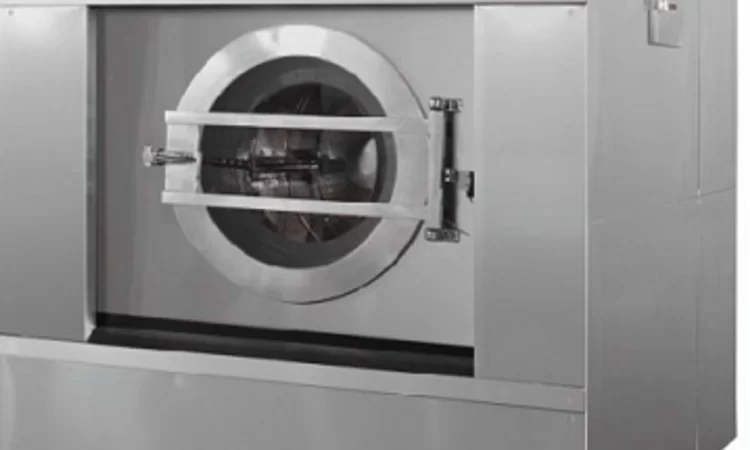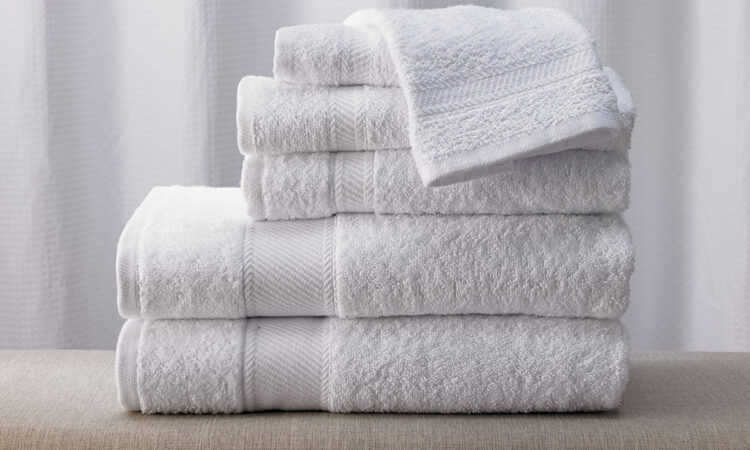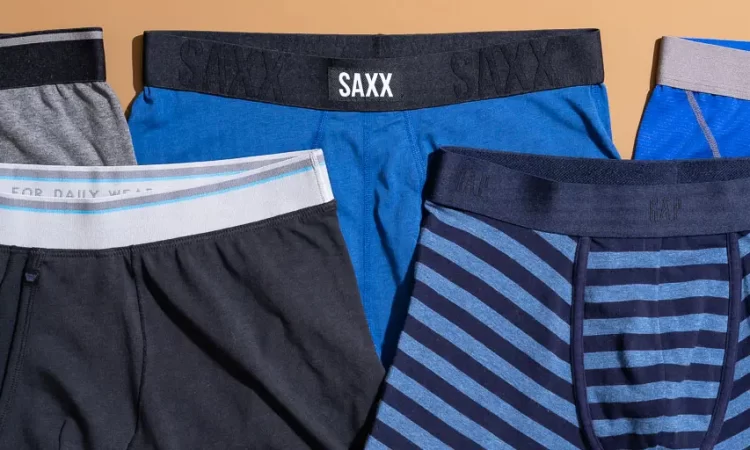
Welcome to the ultimate guide to washing machines! In today’s fast-paced world, where time is of the essence, household chores can often feel like a burden. However, thanks to the marvels of modern technology, mundane tasks like laundry have been revolutionized by washing machines.
For anyone with an interest in home appliances, a washing machine is more than just an appliance; it’s a time-saving, efficient, and essential part of daily life. This comprehensive blog post aims to provide valuable insights into the world of washing machines, catering specifically to those seeking to make an informed decision when selecting the perfect appliance for their home.
In this guide, we’ll explore the different types of washing machines available in the market, from the classic top-loaders to the innovative front-loaders. We’ll delve into the unique features and advanced technologies that modern washing machines offer, making laundry day a seamless experience.
Understanding the importance of capacity and load size is crucial when it comes to choosing the right washing machine for your household. We’ll break down the concept of capacity and load size options, ensuring you can optimize your washing cycles for efficiency and performance.
Moreover, we’ll delve into the cutting-edge features and technologies that have revolutionized washing machines. From specialized washing modes catering to specific fabric types to smart washing machines that can be controlled through your smartphone, we’ll explore the future of laundry convenience.
Energy efficiency and water conservation have become top priorities in modern households, and washing machines have risen to the challenge. We’ll shed light on the environmental benefits of energy-efficient models and share practical tips to minimize water consumption without compromising on cleanliness.
As with any appliance, proper maintenance and care are essential to ensure longevity and optimal performance. We’ll guide you through simple cleaning routines and offer valuable advice to prevent odors and mildew buildup, keeping your washing machine in top-notch condition.
Even the most reliable washing machines may encounter occasional issues. Fear not, as we’ll provide troubleshooting tips for common problems that you can handle yourself. For more complex issues, we’ll recommend reputable repair services, ensuring your washing machine continues to serve you faithfully.
Whether you’re a first-time buyer or looking to upgrade your existing washing machine, this guide is designed to empower you with the knowledge needed to make an informed decision. By the end of this journey, you’ll be equipped with the confidence to select the perfect washing machine that best suits your lifestyle and laundry needs.
So, let’s dive into the world of washing machines and discover the wonders that await. Whether you’re a laundry enthusiast or simply seeking to make your life more efficient, you’re about to embark on a thrilling exploration that will redefine your laundry experience. Let’s get started!
The research
Types of Washing Machines
When it comes to choosing a washing machine for your home, you’ll encounter two main types: top-load washing machines and front-load washing machines. Each type has its own set of features, advantages, and considerations, making it essential to understand the differences between them. Let’s explore both options in detail:
Top-Load Washing Machines:
Top-load washing machines are the more traditional and familiar choice for many households. As the name suggests, these machines have a top-opening lid, allowing you to load and unload laundry from the top of the unit. Here are some key features and advantages of top-loaders:
- Easy Loading: With the top-opening lid, loading and unloading laundry is a breeze. You don’t need to bend down to place clothes inside the machine, making it a convenient option, especially for those with mobility concerns.
- Faster Cycles: Top-loaders typically have shorter wash cycles, making them a time-efficient choice for busy households.
- Budget-Friendly: In general, top-load washing machines are more affordable than front-loaders, making them an attractive option for budget-conscious consumers.
- Additional Features: Many top-loaders come with advanced features, such as multiple washing modes, temperature settings, and smart technology options.
However, it’s important to be aware of some considerations when opting for a top-load washing machine:
- Water Usage: Top-loaders usually require more water per cycle compared to front-loaders, which may lead to higher water bills.
- Agitator vs. Impeller: Some top-load models come with an agitator (a central pole that moves clothes around) or an impeller (a low-profile disc that rotates clothes). The choice between the two can affect the capacity and washing performance.
Front-Load Washing Machines:
Front-load washing machines are relatively newer to the market but have gained popularity for their efficiency and performance. With a front-opening door, these machines offer a range of advantages:
- Energy Efficiency: Front-loaders are known for their energy efficiency, using less water and electricity per cycle, which translates to cost savings over time.
- Superior Cleaning: The drum’s horizontal axis allows front-loaders to use gravity to their advantage, providing a gentler and more effective wash that is kinder to fabrics.
- Larger Capacity: Front-loaders typically have larger drum capacities, accommodating more laundry per load, perfect for bigger households.
- Space-Saving Design: The front-opening door allows you to stack a dryer on top of the washing machine, making them ideal for compact laundry spaces.
However, it’s essential to consider the following factors when choosing a front-load washing machine:
- Initial Cost: Front-loaders may have a higher upfront cost compared to top-loaders, but their long-term energy efficiency can offset this investment.
- Door Seal Maintenance: Front-loaders require regular cleaning and maintenance of the door seal to prevent mold or mildew buildup.
In conclusion, the choice between a top-load and front-load washing machine largely depends on your preferences, laundry needs, and budget. Both types offer distinct advantages, and it’s essential to assess what aligns best with your lifestyle. As we move forward in this guide, we’ll explore additional factors to consider, helping you make an informed decision to find the perfect washing machine for your home. Let’s continue our exploration of these household marvels!
Washing Machine Capacity and Load Size
Understanding the capacity and load size of a washing machine is crucial for efficient laundry management. The right capacity ensures that you can wash the right amount of laundry in each cycle, optimizing energy usage and saving time. Let’s delve into the concepts of washing machine capacity and load size:
A. Grasping the Concept of Washing Machine Capacity:
Washing machine capacity refers to the maximum weight of dry laundry that the machine can handle in a single cycle. The capacity is usually measured in cubic feet (cu. ft.) or kilograms (kg). When choosing the appropriate capacity for your household, consider the following factors:
- Household Size: Larger households with more family members typically require washing machines with higher capacities. A capacity of 4.5 cu. ft. or more is suitable for larger families, while smaller households may find a capacity of 3.5 cu. ft. to 4.5 cu. ft. sufficient.
- Laundry Frequency: Consider how often you do laundry. If you prefer doing larger loads less frequently, a higher capacity machine is beneficial. On the other hand, if you prefer smaller, more frequent loads, a machine with a smaller capacity may be sufficient.
- Special Occasions: If you frequently have large laundry loads due to special occasions or specific garment types (e.g., bedding, curtains), a larger capacity washing machine can accommodate these needs.
B. Load Size Options:
Washing machines offer various load size options to cater to different laundry needs. Understanding load size options is crucial for optimizing washing efficiency:
- Small Load: Small load options are suitable for washing a few lightly soiled garments quickly and efficiently. It’s an ideal setting for days when you have limited laundry to wash or need something cleaned urgently.
- Medium Load: The medium load option is suitable for everyday laundry needs, accommodating a typical load of mixed fabrics and soil levels.
- Large Load: For larger loads or heavily soiled items, the large load option allows you to clean more laundry in a single cycle, reducing the number of washes needed.
- Auto Load Sensing: Some modern washing machines come with auto load sensing technology, which automatically adjusts the water level and cycle time based on the load size, maximizing water and energy efficiency.
By understanding your household’s laundry habits and considering the capacity and load size options, you can optimize your washing machine’s performance and minimize energy and water usage. Choosing the right capacity and load size settings ensures that each laundry cycle is efficient and effective.
In the next section, we’ll delve into the features and technology that make modern washing machines even more versatile and user-friendly. Get ready to explore the innovative advancements that have revolutionized laundry day!
Washing Machine Features and Technology
Modern washing machines are equipped with a wide array of features and advanced technologies that enhance their performance and convenience. From specialized washing modes to smart technology, these innovations have revolutionized laundry day. Let’s explore the cutting-edge features and technology that make washing machines more versatile and user-friendly:
A. Mastering Advanced Washing Modes:
- Quick Wash: The Quick Wash mode is perfect for those times when you need clean clothes in a hurry. It significantly reduces the wash cycle duration without compromising on cleaning efficiency.
- Heavy-Duty: The Heavy-Duty mode is designed to tackle heavily soiled items, such as bedding, workwear, or sports gear. It uses more water and extends the wash cycle to ensure a thorough clean.
- Delicate: Delicate fabrics, such as silk, lace, or chiffon, require gentle care. The Delicate mode uses slower agitation and lower spin speeds to protect delicate garments from damage.
- Eco-Friendly: The Eco-Friendly mode prioritizes energy and water efficiency, reducing the machine’s environmental impact without compromising on cleaning performance.
B. Embracing Smart Technology in Washing Machines:
- Smartphone Connectivity: Smart washing machines can be connected to your smartphone or tablet through dedicated apps. This connectivity allows you to control and monitor the washing machine remotely, giving you the flexibility to start, stop, or adjust cycles from anywhere.
- Auto-Dosing: Some models come with auto-dosing technology, which automatically dispenses the right amount of detergent and fabric softener based on the load size and soil level. This ensures optimal cleaning results while minimizing detergent waste.
- Energy Optimization: Smart washing machines can analyze your laundry habits over time and optimize wash cycles to reduce energy consumption without compromising on cleaning performance.
- Smart Diagnosis: In case of any issues, smart washing machines can conduct a self-diagnosis and communicate error codes to the connected app. This feature assists in identifying problems and enables timely maintenance or repairs.
C. Additional Innovative Features:
- Steam Cleaning: Some washing machines feature a steam cleaning option, which uses high-temperature steam to sanitize and refresh clothes, removing allergens and odors effectively.
- Add Garment: This feature allows you to pause the wash cycle to add forgotten items to the load, ensuring no clothing is left behind.
- Child Lock: Child lock safety features prevent accidental changes to the wash cycle settings, giving you peace of mind if you have curious little ones around.
- Time Delay: Time delay allows you to set the washing machine to start the cycle at a later time, ideal for those moments when you want the laundry to finish just as you arrive home.
These innovative features and technologies have transformed washing machines into efficient and intelligent appliances. Whether you’re a tech enthusiast or simply seek greater convenience in your daily routine, these advancements cater to a wide range of user needs.
As we progress through this guide, we’ll explore essential factors like energy efficiency and water conservation, ensuring you can make an informed decision when selecting the perfect washing machine for your home. The journey to a seamless laundry experience continues—let’s move on to the next section!
Energy Efficiency and Water Consumption
In today’s environmentally conscious world, energy efficiency and water conservation are critical considerations when choosing a washing machine. Fortunately, modern washing machines come equipped with advanced features designed to minimize their environmental impact while still delivering exceptional cleaning performance. Let’s delve into the importance of energy efficiency and water consumption in washing machines:
A. Why Energy Efficiency Matters:
- Environmental Benefits: Energy-efficient washing machines consume less electricity, which helps reduce greenhouse gas emissions and contributes to a more sustainable environment.
- Cost Savings: Energy-efficient models may have a higher upfront cost, but they save you money in the long run by reducing your energy bills. Over time, the cost savings can outweigh the initial investment.
- Government Certifications: Look for washing machines with Energy Star certification, as this indicates that the appliance meets strict energy efficiency guidelines set by government agencies.
Emphasizing Water Conservation:
- Water-Saving Features: Many modern washing machines are equipped with water-saving features, such as load sensors and auto-adjusting water levels. These technologies ensure that the machine uses only the necessary amount of water for each load, minimizing wastage.
- Cycle Optimization: Some washing machines optimize water usage by adjusting the water level based on the load size and fabric type. This prevents excessive water usage for smaller loads and delicate fabrics.
- Cold Water Washing: Washing machines with cold water washing options allow you to clean your laundry effectively without the need for hot water. This not only saves energy but also prevents color fading and fabric damage.
- High Spin Speeds: Washing machines with high spin speeds remove more water from the clothes during the final spin cycle. As a result, the clothes come out of the washer with less water, reducing the drying time and energy needed for the drying process.
To further enhance the energy efficiency and water conservation of your washing machine, consider adopting these eco-friendly laundry practices:
- Run full loads whenever possible to maximize the machine’s capacity and reduce the number of wash cycles.
- Pre-treat stains to avoid the need for additional washing or re-washing heavily soiled items.
- Use cold water whenever suitable, as heating water accounts for a significant portion of a washing machine’s energy consumption.
- Opt for shorter wash cycles, such as the quick wash mode, for lightly soiled clothing that requires less washing time.
By selecting an energy-efficient washing machine and adopting eco-friendly laundry practices, you can contribute to conserving precious resources and reducing your carbon footprint.
In the next section, we’ll shift our focus to the essential aspect of washing machine maintenance and care. Proper maintenance ensures the longevity and optimal performance of your appliance, making it a worthwhile investment. Let’s explore how to keep your washing machine running smoothly and efficiently!
Washing Machine Maintenance and Care
Proper maintenance and care are vital for keeping your washing machine running smoothly and efficiently for years to come. Regular maintenance not only ensures optimal performance but also helps prevent potential issues that could lead to costly repairs. Let’s explore essential washing machine maintenance tasks and care tips to keep your appliance in top-notch condition:
A. Cleanliness and Odor Prevention:
- Clean the Drum and Detergent Drawer: Regularly clean the washing machine drum and detergent drawer to remove any detergent residue, lint, or debris that may accumulate over time. Use a damp cloth and a mild detergent to wipe down these areas.
- Run a Monthly Cleaning Cycle: Periodically run an empty washing machine with hot water and a cup of white vinegar or a washing machine cleaning agent. This helps remove any buildup, bacteria, and odors that may develop over time.
- Keep the Door Open: After each use, leave the washing machine door slightly ajar to allow air circulation, preventing the growth of mold or mildew in the drum and rubber door seal.
B. Regular Maintenance for Longevity:
- Check Hoses and Connections: Periodically inspect the water hoses and connections for any signs of wear, leaks, or cracks. Replace damaged hoses immediately to prevent water leakage.
- Level the Washing Machine: Ensure that your washing machine is properly leveled to prevent excessive vibrations during the spin cycle. Use a leveling tool or adjustable feet to make necessary adjustments.
- Clean or Replace Filters: If your washing machine has a lint filter, clean it regularly to maintain optimal water flow and prevent clogs. For models with self-cleaning filters, follow the manufacturer’s guidelines.
- Avoid Overloading: Overloading the washing machine can strain the motor and reduce cleaning efficiency. Follow the manufacturer’s guidelines on load size to avoid unnecessary stress on the appliance.
C. Addressing Unusual Noises or Issues:
- Listen for Unusual Noises: Pay attention to any unusual noises during the washing machine’s operation, as they may indicate a problem. Screeching, banging, or grinding sounds may require professional attention.
- Address Leaks Promptly: If you notice any water leakage from your washing machine, identify the source and address the issue promptly. Leaks can lead to water damage and potential hazards.
- Clean the Drain Pump Filter: If your washing machine has a drain pump filter, check it regularly for blockages or debris. Cleaning the filter ensures proper drainage and prevents water backup.
By performing these regular maintenance tasks and adhering to proper care guidelines, you can extend the lifespan of your washing machine and maintain its efficiency. A well-maintained washing machine not only saves you money on repairs but also ensures your clothes are thoroughly cleaned and cared for.
In the next section, we’ll dive into troubleshooting common washing machine issues, empowering you to handle minor problems and know when to seek professional assistance. Let’s equip you with the know-how to tackle laundry challenges with ease!
Troubleshooting Common Washing Machine Issues
Even with regular maintenance, washing machines may encounter common issues over time. Understanding how to troubleshoot these problems can save you time and money on repairs. Let’s explore some common washing machine issues and their possible solutions:
A. Identifying and Fixing Common Problems:
- Washer Not Starting:
- Ensure the washing machine is properly plugged in and that the power outlet is functioning.
- Check the door or lid switch to ensure it is engaging properly. If it’s faulty, it may prevent the machine from starting.
- Verify that the water supply is turned on and that there are no kinks or blockages in the water hoses.
- Excessive Vibrations or Noisy Operation:
- Ensure the washing machine is properly leveled. Use a leveling tool to adjust the feet if necessary.
- Check for any loose or worn parts, such as drum bearings or shock absorbers, and have them replaced if needed.
- Avoid overloading the washing machine, as it can cause excessive vibrations during the spin cycle.
- Water Leaks:
- Inspect the water hoses for any signs of wear or damage. Tighten connections or replace damaged hoses as needed.
- Check the door or lid seal for any tears or gaps. Replace the seal if necessary to prevent water leakage.
B. When to Call for Professional Assistance:
While some washing machine issues can be resolved with DIY solutions, certain problems may require the expertise of a professional technician. Consider seeking professional assistance in the following situations:
- Electronic or Control Panel Issues: If the washing machine displays error codes or malfunctions related to the control panel or electronic components, it’s best to consult a qualified technician for diagnostics and repairs.
- Persistent Leaks: If you’ve identified a water leak, but it persists even after checking hoses and seals, it may indicate a more complex problem that requires professional assessment.
- Motor or Drum Malfunctions: Problems with the motor or drum, such as unusual noises, excessive vibrations, or failure to spin, should be inspected by a professional to avoid further damage.
- Electrical Problems: If you suspect any electrical issues, such as short circuits or power supply problems, it’s crucial to contact a licensed electrician or washing machine technician for safety and proper repairs.
Always prioritize safety when dealing with washing machine issues. If you’re unsure about troubleshooting or if the problem seems beyond your expertise, it’s best to seek professional help to avoid further complications.
Remember, regular maintenance and prompt attention to minor issues can extend the life of your washing machine and ensure that it continues to provide reliable and efficient service for years to come.
In conclusion, by understanding the types of washing machines, capacity, load size options, energy efficiency, and water consumption, as well as proper maintenance and troubleshooting tips, you are well-equipped to make informed decisions when selecting, using, and caring for your washing machine. With this knowledge, you can now embark on a seamless laundry journey, enjoying the convenience and benefits that modern washing machines offer. Happy laundering!
Frequently Asked Questions (FAQ) About Washing Machines
1. What are the different types of washing machines available?
- Answer: There are two main types of washing machines: top-load washing machines and front-load washing machines. Top-loaders have a lid on top for loading and unloading, while front-loaders have a door on the front.
2. How do I choose the right washing machine capacity for my household?
- Answer: Consider factors like household size, laundry frequency, and special occasions. Larger households may require capacities of 4.5 cu. ft. or more, while smaller households can opt for 3.5 cu. ft. to 4.5 cu. ft.
3. What are load size options, and how do they affect washing efficiency?
- Answer: Load size options refer to the settings for small, medium, and large loads in washing machines. Properly selecting the load size ensures efficient water and energy usage during laundry cycles.
4. What are the advanced washing modes available in modern washing machines?
- Answer: Modern washing machines offer advanced washing modes such as Quick Wash for fast cycles, Heavy-Duty for heavily soiled items, and Delicate for gentle care of delicate fabrics.
5. How does smart technology enhance washing machines?
- Answer: Smart washing machines offer smartphone connectivity for remote control and monitoring. They also feature auto-dosing technology and energy optimization for efficient washing.
6. Why is energy efficiency important in washing machines?
- Answer: Energy-efficient washing machines reduce electricity consumption, resulting in cost savings and a positive impact on the environment by reducing greenhouse gas emissions.
7. How can I conserve water while using a washing machine?
- Answer: Water-saving features in washing machines, such as load sensors and cycle optimization, ensure that only the necessary amount of water is used for each load.
8. What are some essential maintenance tasks for washing machines?
- Answer: Regular maintenance includes cleaning the drum and detergent drawer, checking water hoses and connections, and ensuring the washing machine is properly leveled.
9. How can I prevent odors and mildew buildup in my washing machine?
- Answer: Leaving the washing machine door slightly ajar after each use promotes air circulation, preventing mold and mildew growth. Running a monthly cleaning cycle with vinegar also helps.
10. How can I troubleshoot common washing machine issues?
- Answer: For common issues like the washer not starting or excessive vibrations, check power connections and ensure proper leveling. Seek professional assistance for complex electronic or motor malfunctions.
Remember to perform regular maintenance and adopt eco-friendly laundry practices to optimize your washing machine’s efficiency and prolong its lifespan. If you encounter any unusual issues or need professional help, do not hesitate to consult qualified technicians for reliable solutions.
11. Are front-load washing machines more energy-efficient than top-loaders?
- Answer: Yes, front-load washing machines are generally more energy-efficient than top-loaders. Their horizontal drum design uses gravity for a more efficient wash, requiring less water and energy per cycle.
12. Can I stack a dryer on top of a front-load washing machine?
- Answer: Yes, many front-load washing machines have a space-saving design that allows you to stack a compatible dryer on top. Ensure the manufacturer recommends stacking for your specific models.
13. Are smart washing machines difficult to set up and operate?
- Answer: Smart washing machines are designed for user-friendliness. Setting up the smartphone connectivity is typically straightforward, and the associated apps provide easy-to-follow instructions for remote control and monitoring.
14. How do I know if my washing machine needs professional repair?
- Answer: If your washing machine displays error codes, experiences persistent leaks, or makes unusual noises, it may require professional attention. Additionally, electrical issues should always be addressed by licensed technicians.
15. Can I use cold water for all types of laundry?
- Answer: Cold water is suitable for most laundry, especially for colors and delicate fabrics. However, for heavily soiled items or bedding, warm or hot water may be more effective in removing stains and bacteria.
16. Are washing machine warranties important?
- Answer: Yes, warranties provide peace of mind in case of unexpected issues. Check the manufacturer’s warranty coverage and consider extended warranties for added protection.
17. How often should I run a cleaning cycle for my washing machine?
- Answer: Running a cleaning cycle once a month is generally sufficient to maintain your washing machine’s cleanliness and prevent odors and mold buildup.
18. Can I use fabric softener in all washing machine cycles?
- Answer: Some washing machines have specific compartments for fabric softener, while others recommend adding it manually during the rinse cycle. Follow the manufacturer’s guidelines to ensure proper usage.
19. Do front-load washing machines require special detergent?
- Answer: Front-loaders work well with high-efficiency (HE) detergent, which produces fewer suds and is designed for low-water consumption. Using regular detergent in a front-loader can lead to excessive suds and inefficient washing.
20. Is it safe to leave the washing machine unattended while running?
- Answer: While washing machines are designed to operate safely, it is generally recommended not to leave them unattended during the wash cycle to prevent potential water leaks or other issues.
By understanding washing machine features, maintenance, and troubleshooting tips, you can make the most of your appliance and address any issues effectively. A well-maintained washing machine not only ensures clean and fresh laundry but also extends the lifespan of the appliance, making it a valuable investment for your home.
Conclusion:
In conclusion, washing machines have evolved into indispensable appliances that simplify and streamline the laundry process for households worldwide. By understanding the different types of washing machines, capacity considerations, and load size options, you can select a model that perfectly suits your lifestyle and laundry needs. Whether you opt for a top-load or front-load washing machine, each type offers distinct advantages that cater to various preferences.
Modern washing machines come equipped with a plethora of advanced features and smart technology, revolutionizing the laundry experience. From specialized washing modes for different fabric types and soil levels to smartphone connectivity that allows remote control and monitoring, these innovations provide unparalleled convenience and efficiency.
Energy efficiency and water conservation are crucial factors to consider when choosing a washing machine. Energy-efficient models not only save you money on electricity bills but also contribute to a greener environment by reducing carbon emissions. Water-saving features in washing machines ensure that only the necessary amount of water is used for each load, promoting responsible water usage.
To keep your washing machine performing at its best, regular maintenance and care are essential. Cleaning the drum and detergent drawer, checking water hoses and connections, and keeping the washing machine properly leveled are some of the maintenance tasks that contribute to its longevity and efficiency. By adopting eco-friendly laundry practices and addressing minor issues promptly, you can optimize the performance and lifespan of your washing machine.
In cases where troubleshooting is needed, knowing how to identify and fix common washing machine problems can save you time and money on repairs. Simple issues like the washer not starting or excessive vibrations can often be resolved with DIY solutions. However, for more complex electronic or motor malfunctions, seeking professional assistance from qualified technicians is advisable.
The journey through the world of washing machines has equipped you with valuable knowledge to make informed decisions when selecting, using, and maintaining your appliance. By embracing eco-friendly practices and the latest technology, you can enjoy a seamless and efficient laundry experience while contributing to a sustainable and eco-conscious lifestyle.
Now that you’re armed with the know-how to tackle laundry challenges and make the most of your washing machine, it’s time to embark on a journey of clean, fresh, and hassle-free laundry days. As you confidently load your washing machine and press that start button, revel in the convenience and benefits it brings to your daily life. Happy laundering!





























